![]()
![]()
![]()
Use LEFT and RIGHT arrow keys to navigate between flashcards;
Use UP and DOWN arrow keys to flip the card;
H to show hint;
A reads text to speech;
28 Cards in this Set
- Front
- Back
|
Phylogeny
|
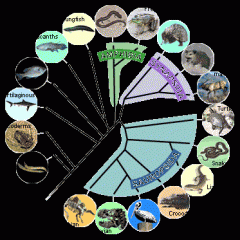
evolutionary history of a species or group of species
|
|
|
Phylogeny can be uncovered through:
|
1. Fossil record
2. Morphological similarities 3. Biochemical similarities |
|
|
Systematics
|
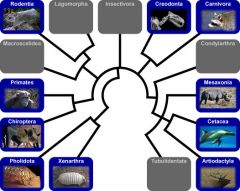
analytical approach to understanding diversity/relationships of organisms
(extinct and extant) - Relationships based upon: 1. Morphological similarities 2. Biochemical/molecular similarities |
|
|
Taxonomy
|
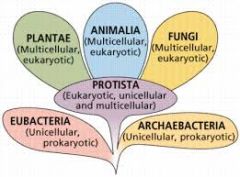
division of organisms into categories based on sets of characteristics used to assess similarities and differences
|
|
|
Binomial Nomenclature
|

two-name naming system
1. 1st name: genus (group to which species belong – capitalized) 2. 2nd name: specific epithet (unique for each species – lower case) |
|
|
Taxon
|
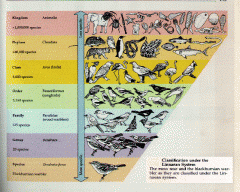
unit at any level of Hierarchical Classification (HC)
|
|
|
Phylogenetic Tree
|
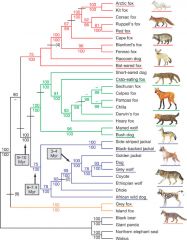
branching diagram depicting hypotheses about evolutionary relationships
1. Each branch point represents a divergence of two species from a common ancestor (dichotomy) |
|
|
Homologies
|
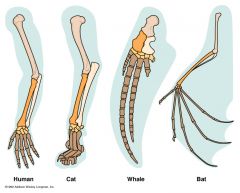
similarities in organisms due to shared ancestry
|
|
|
Morphological Homologies
|
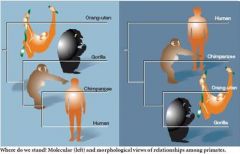
similarities in arrangement and shape of physical structures due to shared ancestry
|
|
|
Analogies
|
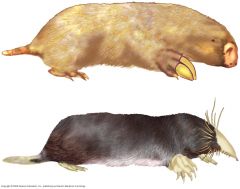
similarities in arrangement
And shape of physical structures due to Convergent evolution rather than shared ancestry (Molecular comparisons also reveal large numbers Of nucleotide base substitutions between Comparable genes resulting in great divergences In lineages). |
|
|
Convergent Evolution
|
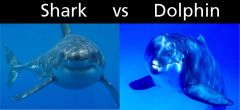
when similar environmental pressures and natural selection produce similar adaptations in organisms from different evolutionary lineages
(Ex. Sharks V. dolphins) |
|
|
Homoplasies
|
![analogous structures that
Evolve independently in the absence of convergent
Evolution (Ex. Wings)
[fossil evidence indicates that bat and bird wings
Arose independently from walking forelimbs of
Different ancestors]](https://images.cram.com/images/upload-flashcards/09/96/35/4099635_m.jpg)
analogous structures that
Evolve independently in the absence of convergent Evolution (Ex. Wings) [fossil evidence indicates that bat and bird wings Arose independently from walking forelimbs of Different ancestors] |
|
|
Molecular Homologies
|

alignment of comparable nucleic acids (DNA) from two species (Ex. Chimpanzee V. humans)
1. More closely related species descended from a common ancestor will have fewer differences |
|
|
Molecular Systematics
|
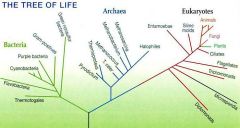
comparison of DNA, RNA, and other molecules to determine evolutionary relationships between individual genes and entire genomes
|
|
|
Clade
|
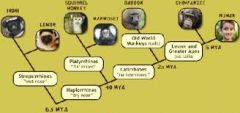
group of species that includes an ancestral species and all of its descendants
|
|
|
Cladistics
|
analysis of how species may be grouped into clades
|
|
|
Anagenesis
|
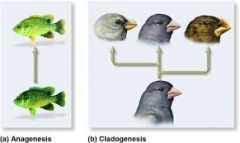
accumulation of changes that transforms a given species into a species with different characteristics
1. Straight-line evolution |
|
|
Cladogenesis
|
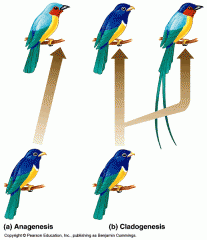
splitting of a species into two or more species; promotes biological diversity by increasing the number of species
1. Branching evolution |
|
|
Monophyletic Clade
|
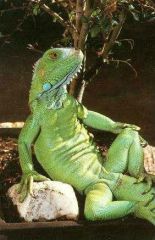
consists of an Ancestral species and its descendants
(Ex. Reptilian ancestor) |
|
|
Paraphyletic Clade
|
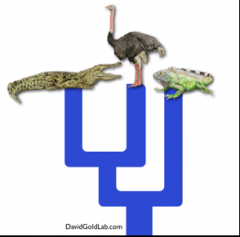
Consists of an Ancestral species and some, but not all of its Descendants
(Ex. Reptilian ancestor + reptiles-birds) |
|
|
Polyphyletic Clade
|
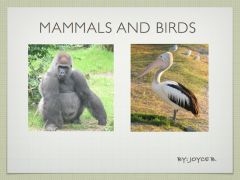
consists of several Species that lack a common ancestor
(Ex. Mammals and birds) |
|
|
Shared Ancestral Character
|
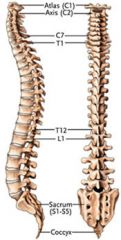
a feature that originated in an ancestor of the taxon
(Ex. Backbone among vertebrates) |
|
|
Shared Derived Character
|

an evolutionary novelty feature unique to a particular group
(Ex. Fur/hair among mammals) |
|
|
Outgroup
|

species or group of species from an evolutionary lineage that is known to have diverged early from other groups
(Ex. Mammals from early reptiles) |
|
|
Ingroup
|
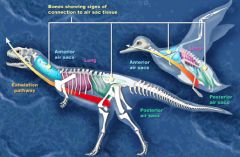
species or group of species whose evolutionary relationships are determined to be closer
(dinosaurs and birds) |
|
|
Phylogram
|
![tree in which the length of a branch from a common ancestor reflects the number of changes that have occurred in a particular DNA sequence within a lineage
(Ex. Canine phylogeny) [African wild dog: Lycaon pictus]](https://images.cram.com/images/upload-flashcards/10/01/90/4100190_m.jpg)
tree in which the length of a branch from a common ancestor reflects the number of changes that have occurred in a particular DNA sequence within a lineage
(Ex. Canine phylogeny) [African wild dog: Lycaon pictus] |
|
|
Principle of Maximum Parsimony
|
![1. Allows the investigation of the simplest explanation that is consistent with the facts (Occam’s Razor) [the simplest explanation is more than likely the explanation]
2. Requires the fewest evolutionary events to have occurred in the f...](https://images.cram.com/images/upload-flashcards/10/01/30/4100130_m.jpg)
1. Allows the investigation of the simplest explanation that is consistent with the facts (Occam’s Razor) [the simplest explanation is more than likely the explanation]
2. Requires the fewest evolutionary events to have occurred in the form of shared derived characters 3. The most parsimonious tree (with the simplest explanation) is usually the most likely, but not always a) Four-chambers hearts in birds and mammals are not homologous, but analogous |
|
|
Principle of Maximum Likelihood
|
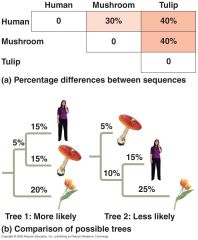
Given certain rules about how DNA changes over time, a tree can be found that reflects the most likely sequence of evolutionary event
|

